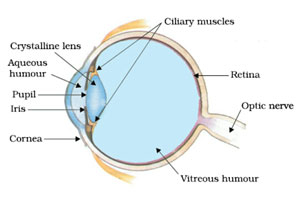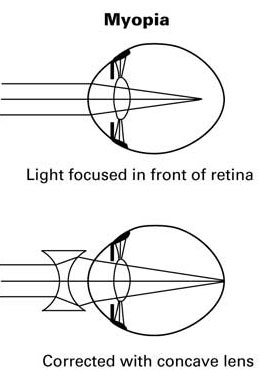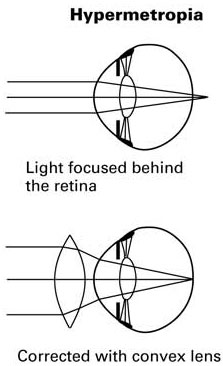Question: Draw a labelled diagram of the eye and answer the following questions: a. From where does light enter inside the eye? b. Which muscles control the focal length of the eye lens? c. Where is the image formed? d. Which nerve sends the image signals to the brain?
Answer: (a) Light enters the eye through the cornea. (b) Ciliary muscles control the focal length of the eye lens. (c) Image is formed on the retina. (d) Optic nerve sends the image to the brain.
Question: Distinguish between myopia and hypermetropia. Draw diagrams to show how these defects can be corrected by using suitable lenses.
Answer:
Question: Suppose a swimming pool is filled with an imaginary liquid which is optically rarer than air. For a person looking at the pool from outside, will the apparent depth of the pool be less than or greater than the real depth? Give reasons.
Answer: The apparent depth of the pool will be greater than the real depth if the swimming pool is filled with an
imaginary liquid which is optically rarer than air. This will happen because rays of light from any point of the floor of the pool refract towards the normal as they emerge from a rarer to a denser medium.
Question: What type of image is formed when rays of light coming from a point on the object diverge after reflection or refraction—real or virtual?
Answer: When rays of light coming from a point on the object diverge after reflection or refraction, a virtual image is formed.
Question: Will a spectrum be formed if blue light falls on a prism? Give reasons.
Answer: No. It is a light of single colour. So it will not be spitted up to form a spectrum.
 Class Notes NCERT Solutions for CBSE Students
Class Notes NCERT Solutions for CBSE Students







I want full pdf page